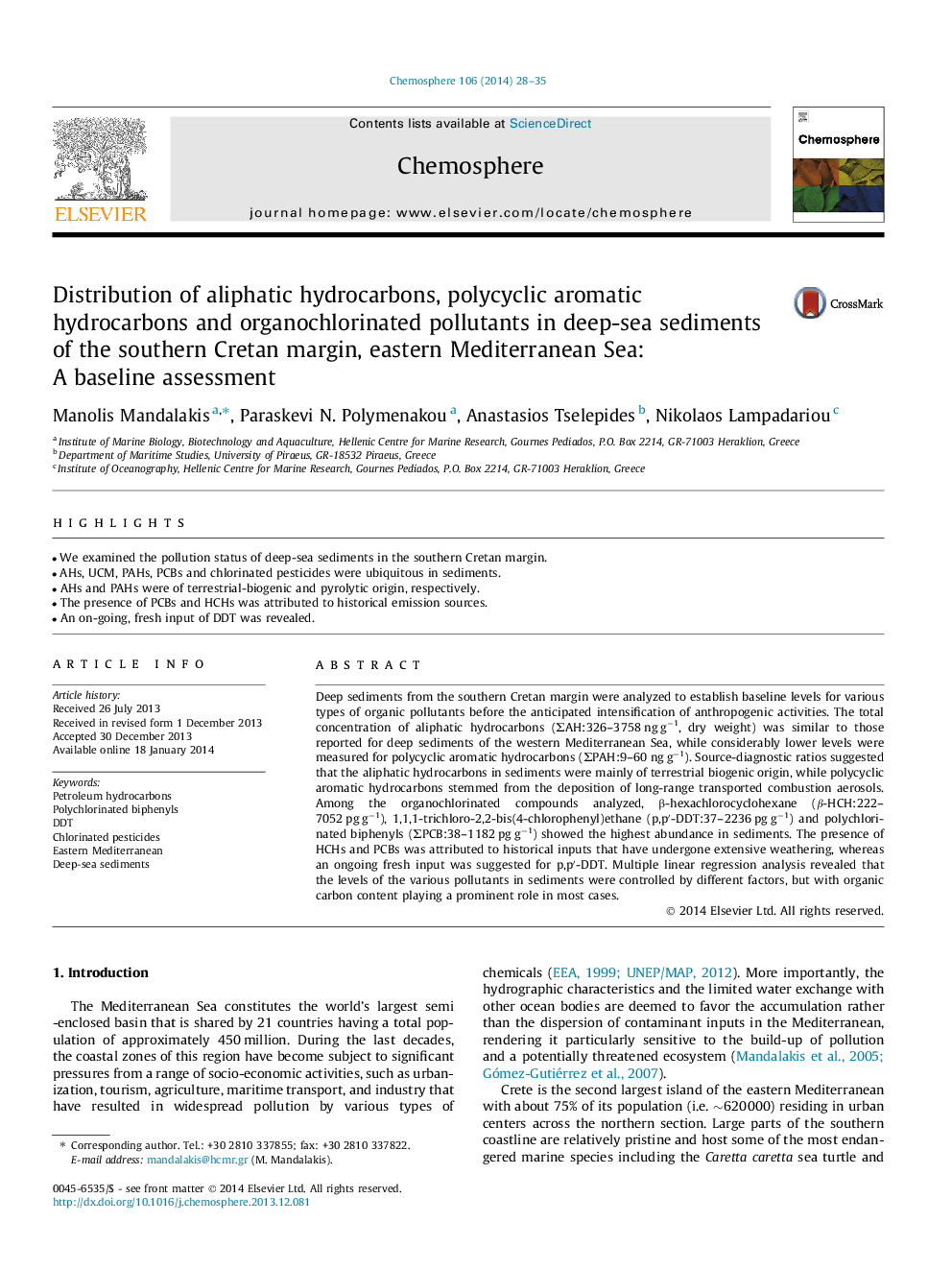| Article ID | Journal | Published Year | Pages | File Type |
|---|---|---|---|---|
| 4408801 | Chemosphere | 2014 | 8 Pages |
•We examined the pollution status of deep-sea sediments in the southern Cretan margin.•AHs, UCM, PAHs, PCBs and chlorinated pesticides were ubiquitous in sediments.•AHs and PAHs were of terrestrial-biogenic and pyrolytic origin, respectively.•The presence of PCBs and HCHs was attributed to historical emission sources.•An on-going, fresh input of DDT was revealed.
Deep sediments from the southern Cretan margin were analyzed to establish baseline levels for various types of organic pollutants before the anticipated intensification of anthropogenic activities. The total concentration of aliphatic hydrocarbons (ΣAH:326–3758 ng g−1, dry weight) was similar to those reported for deep sediments of the western Mediterranean Sea, while considerably lower levels were measured for polycyclic aromatic hydrocarbons (ΣPAH:9–60 ng g−1). Source-diagnostic ratios suggested that the aliphatic hydrocarbons in sediments were mainly of terrestrial biogenic origin, while polycyclic aromatic hydrocarbons stemmed from the deposition of long-range transported combustion aerosols. Among the organochlorinated compounds analyzed, β-hexachlorocyclohexane (β-HCH:222–7052 pg g−1), 1,1,1-trichloro-2,2-bis(4-chlorophenyl)ethane (p,p′-DDT:37–2236 pg g−1) and polychlorinated biphenyls (ΣPCB:38–1182 pg g−1) showed the highest abundance in sediments. The presence of HCHs and PCBs was attributed to historical inputs that have undergone extensive weathering, whereas an ongoing fresh input was suggested for p,p′-DDT. Multiple linear regression analysis revealed that the levels of the various pollutants in sediments were controlled by different factors, but with organic carbon content playing a prominent role in most cases.
